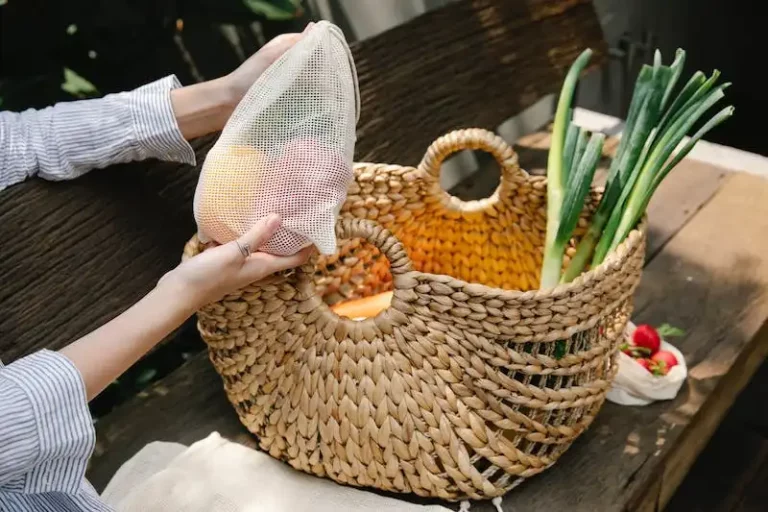If you are a fan of cool and tropical plants, then Gunnera might be a great addition to your garden. Gunnera, also known as giant rhubarb, is a gigantic plant that can grow up to 10 feet tall with leaves spanning 5 feet in diameter. This plant is native to South America and the Pacific region, but it can also be grown in the UK under the right conditions.
Gunnera plants need a frost-free and moisture-rich environment to thrive. If you live in a cooler area, you can grow Gunnera in pots and provide them with some extra protection during the winter months. Regular watering is essential to keep the soil moist, but make sure the plant has good drainage to prevent it from sitting in standing water. Adding organic mulch around the base of the plant will help retain moisture and maintain a cool environment.
When planting Gunnera, it is important to ensure that the soil is well-drained and rich in organic matter. You can add compost or well-rotted manure to improve the soil’s fertility. If you are planting Gunnera in your garden, make sure you have enough space for this mammoth plant to grow. Gunnera spreads through rhizomes, so make sure to leave enough room for it to expand.
Caring for Gunnera plants is relatively easy. Keep the leaves well-watered, especially during hot and dry weather. You can also mist the leaves to increase humidity. Gunnera is a hungry feeder, so be sure to fertilize it regularly with a balanced fertilizer or a slow-release fertilizer. If you notice that the plant is getting too big, you can divide it in the spring or fall to make room for new growth.
In conclusion, Gunnera is a fascinating plant that can be a showstopper in any garden. With the right conditions and proper care, you can enjoy the beauty of its gigantic leaves and impressive panicles of flowers. Whether you grow Gunnera in pots or in the ground, it will surely impress your family and friends. So why not visit your local nursery or garden center for some Gunnera seedlings and begin your journey into the world of this majestic plant?
“Gunnera Growing Instructions and Plant Care” by Kyle Creek
Gunnera Plants Gardening Notes
If you are a fan of giant plants, then Gunneras are perfect for you. These mammoth plants can grow up to 9 feet tall and have leaves that can reach a diameter of 10 feet. They are truly a sight to behold!
Gunnera plants are native to the regions around the Pacific Creek, but with proper care and maintenance, they can be grown in many areas. If you want to grow Gunneras, you’ll need to provide them with a constant source of moisture. They love to have their roots in rich, moist soil, so make sure to keep the soil damp at all times.
Gunneras are hardy plants and can withstand colder temperatures, but they do not do well in freezing conditions. If you live in an area with harsh winters, it’s best to plant them in tubs or pots, so you can bring them indoors during the colder months. Always mulch around the crowns in winter to help them retain moisture and protect them from frost.
Growing Gunneras from seedlings is not the easiest task, but with a little care and attention, you can successfully grow these gigantic plants. Start by planting the seedlings in a mixture of pumice and manure. This will provide them with a nutrient-rich soil that they will thrive in. Keep the soil moist but not waterlogged, and make sure the plants get plenty of sunlight.
Pruning Gunneras is a smart thought if you want to keep them under control. These plants can quickly take over an area if left unchecked. To prune, simply cut back the leaves and stems to the ground in late fall. This will help the plants conserve energy and prepare for the next growing season.
If your Gunnera crowns become overcrowded, it’s time to divide them. Early spring is the best time to do this. Carefully dig up the crowns and separate them into smaller clumps. Replant these new divisions in separate areas or share them with other gardeners.
Gunneras are heavy feeders, so make sure to fertilize them regularly. A well-balanced, organic fertilizer applied every few weeks will help keep the plants healthy and encourage vigorous growth. Additionally, mulching around the plants with compost or well-rotted manure will help retain moisture and suppress weed growth.
If you are new to gardening with Gunneras, it’s always a good idea to learn from others’ experiences. Visit local gardening forums or talk to experienced gardeners to get tips and advice on caring for these impressive plants. GaryW’s Gardening Blog is a great source of information about Gunneras and other tropicals.
Remember, Gunneras can be quite demanding in terms of care and maintenance, but the rewards are well worth it. Once you have a healthy Gunnera plant, it will stay with you for many years and become a showstopper in your garden. So don’t hesitate to give these giants a try!
Gunnera Growing Instructions and Plant Care
If you’re a fan of gardening and have a knack for growing plants, then Gunnera is a healthy and fascinating plant you should consider adding to your garden. Before planting Gunnera, there are a few things you should know about its care and growing instructions.
Planting: Gunnera needs to be planted in an area with rich, well-drained soil. It grows best in cool and moist areas, so choose a spot that receives partial shade. If you’re planting Gunnera in a pot, make sure it has good drainage to avoid overwatering.
Watering: Gunnera requires regular watering, especially during the dry periods. However, be careful not to overwater as it can lead to root rot. Make sure the soil is moist, but not waterlogged.
Crowns and Seedlings: Gunnera can be grown either from crowns or seedlings. Crowns are the preferred method as they establish quickly and produce larger plants. If you choose to grow from seedlings, note that they are more delicate and need extra care.
Pruning: Gunnera can grow quite large, so regular pruning is necessary to keep it in check. Remove any dead or damaged leaves, and cut back any overcrowded or sprawling growth. Pruning is best done in spring after the risk of frost has passed.
Growing in Containers: Gunnera can be grown in containers, but make sure they are large enough to accommodate its extensive root system. Use a well-draining potting soil with added pumice for better drainage. Keep in mind that potted Gunnera will require more frequent watering.
Caring for Gunnera: Keep the area around the Gunnera plant free from weeds to avoid competition for nutrients. Additionally, consider adding a layer of mulch or moss around the plant to help retain moisture and keep the roots cool. In colder climates, provide some protection during the winter months.
Note from the author: Gunnera is a type of rhubarb, and it belongs to the Gunneraceae family. If you’ve never grown Gunnera before, it’s best to visit a local garden or seek advice from an experienced gardener to learn more about its specific care requirements.
With these tips and instructions, you’ll be well-equipped to grow and care for Gunnera in your own garden. Its giant leaves and smart growth habits make it a fascinating addition to any garden landscape.
Hardy Tropicals UK
Planted, always in moss, in spring, with good drainage. This hardy tropical can be cared for much the same as a gunnera rhubarb. Just remember that gunneras need constant watering in the growing season, and then a good long sleep in winter. If you provide the right conditions, you’ll see it start to grow again in spring. The main thing to know about caring for gunnera is that they love moisture, so keep them well watered in the growing season and make sure they have plenty of water at all times.
If you want to grow it in containers, make sure you use a pot that is at least 1.2 meters in diameter, as gunneras can get quite large. They prefer to be grown in containers in a private garden. One tip for watering is to water from above, as this will keep the leaves cool and the roots happy.
Another thing to note is that gunneras can be prone to wind damage, so if you live in an area with strong winds, it’s best to plant them in a sheltered spot. You can also use attachments or stakes to help support the leaves. If the weather gets too cold, you may want to consider covering the plants with pumice or another insulating material to help protect them from freezing temps.
When it comes to pruning, gunneras are pretty low maintenance. Just remove any dead or damaged leaves and trim back any overgrown areas. For larger plants, you can also divide them to create smaller ones. However, be aware that gunneras are a slow-growing plant, so it may take several years before you see significant growth.
In conclusion, if you’re looking to add a touch of the tropics to your UK garden, gunneras are a great choice. They are hardy plants that can withstand the cool UK winters and thrive in the summer months. With proper care and attention, you’ll have a beautiful and impressive addition to your garden.
Re Gunnera Growing Well in Pot
Gunnera plants can be successfully grown in pots, allowing you to enjoy their stunning foliage and giant size, even in smaller or private outdoor spaces. Planting gunnera in pots is a smart option for several reasons. It offers you the flexibility to move the plants around and ensures that they can be fixed in areas with suitable conditions, such as proper moisture and sun exposure. Moreover, growing gunnera in pots makes it easier to care for the plants and protect them during winter frost or extremely hot temperatures.
When planting gunnera in pots, it’s important to choose a container that is large enough to accommodate the plant’s massive size. Gunnera plants have deep roots, so the pot should be at least 2 feet deep with good drainage. Adding pumice or boulders at the bottom of the pot can help improve drainage. As for soil, a mix of compost, manure, and regular potting soil is ideal.
To ensure healthy growth, make sure the gunnera plant receives enough sunlight, at least 4-6 hours a day. Watering is crucial for gunnera plants, especially during hot and dry periods. Regularly check the moisture levels in the pot and water accordingly, keeping the soil consistently moist but not soggy.
Gunnera plants in pots should be pruned in early spring to remove dead or damaged foliage. This will encourage new growth and keep the plants looking neat and tidy. Additionally, you can apply a layer of mulch around the base of the plant to help retain moisture and suppress weed growth.
During winter, it’s important to protect potted gunnera plants from frost. Move the pots to a sheltered location, such as a greenhouse or a garage, or cover them with blankets or special frost protection attachments. Providing this winter care will help ensure the survival of your gunnera plants.
So, whether you have a small balcony, patio, or garden, growing gunnera in pots can be a successful and rewarding experience. Just remember to choose a large enough pot, provide proper care, and enjoy the beauty of these gigantic plants in your outdoor space.
Author: GaryW




